DEFINITION OF TERMS:
- KEYSTONE means they are listed by National Wildlife Federation as core plants for a wildlife garden in my ecoregion (Ecoregion 8).
- NOT QUITE NATIVE means they are slightly out of range but adjacent to NYS as determined by GoBotany and NY Flora Atlas.
- Otherwise the plant is a NY-native or native to the area noted.
KEYSTONE: Silky dogwood (Cornus amomum)
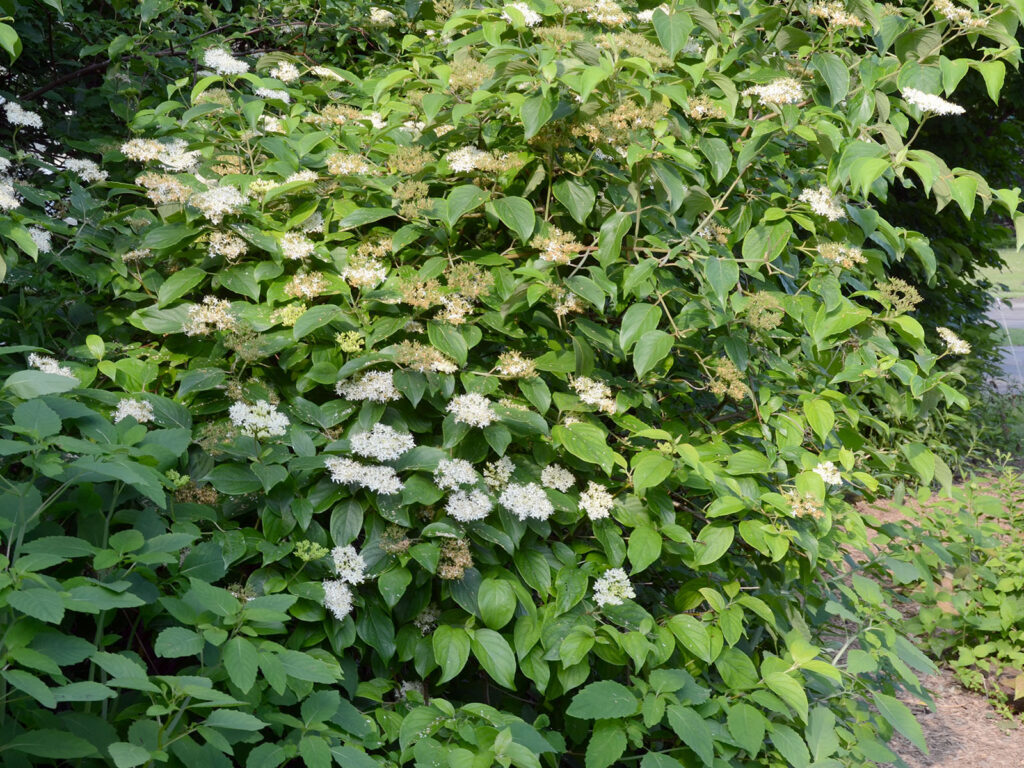
This is another of the dogwood shrubs, but as you can see, it doesn’t have any distinguishing characteristics. Any of the native dogwoods, though, are good for wildlife for a number of reasons.
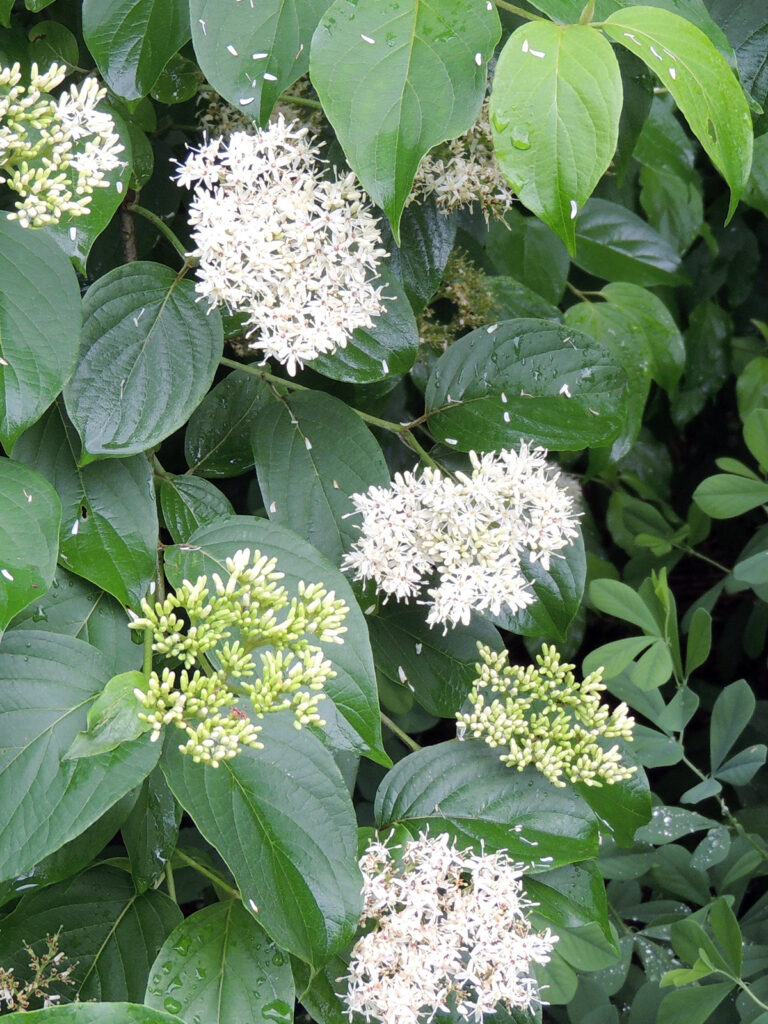
The silky dogwood’s flowers are similar to the pagoda dogwood’s flowers, i.e. not what people think of as “dogwood.” They’re still showy, though, and abundant in the spring. And just like other berry-producing shrubs, their flowers are good sources of nectar.
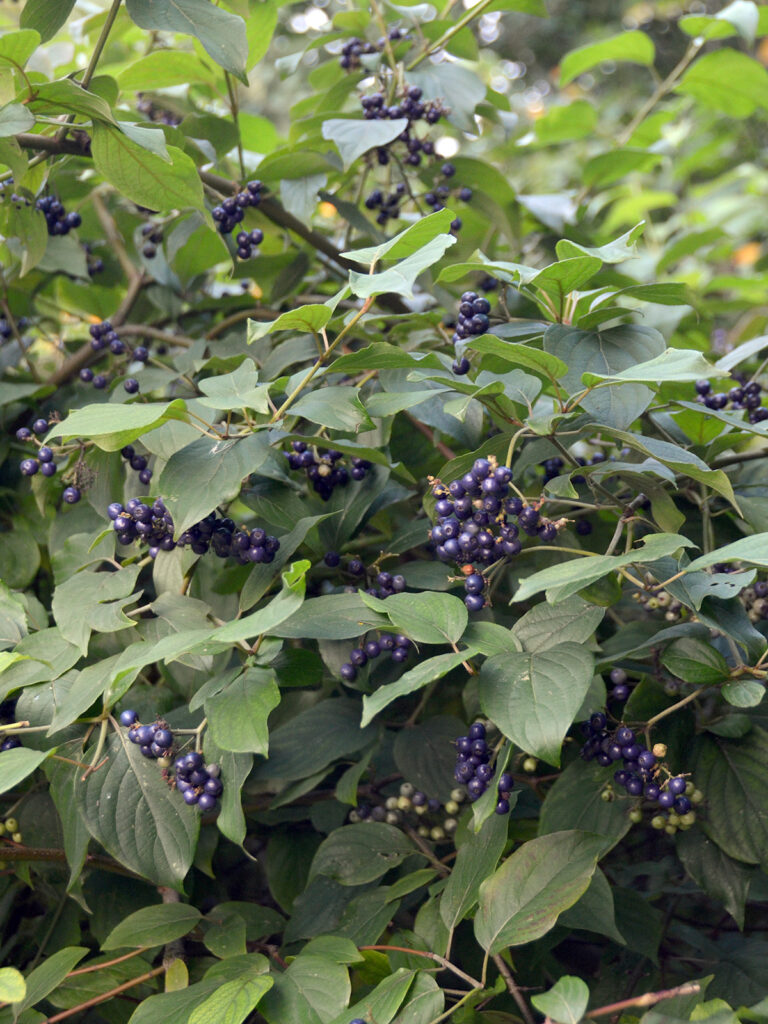
The berries are a bird favorite. They’re quite abundant and attractive — a beautiful cobalt blue.
Wildlife: Berries for birds
** SUPPORTS CONSERVATION BIOLOGICAL CONTROL **
- Learn more:
- Wildflower Center: Silky dogwood
KEYSTONE: Gray dogwood (Cornus racemosa)
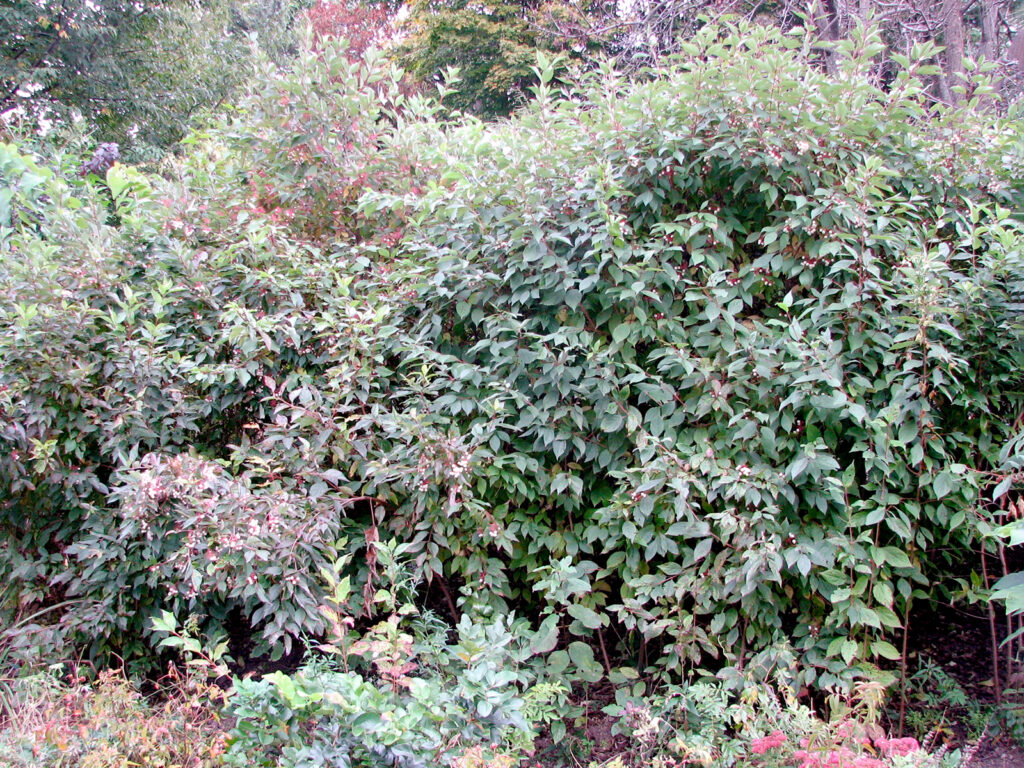
Gray dogwood wants to spread out in a clonal clump, so I’ve defined a fairly wide area for it and then clip anything that comes up beyond that boundary. It’s such a good wildlife shrub that it’s worth the small hassle of keeping it in its assigned location. Of course, it would be ideal if we wanted to cover the whole bank with one plant.
This plant is a favorite with many birds — for its berries, for nesting, or for just “hanging out.” There are always birds in there. The flowers are also good nectar sources for many bees and other insects.
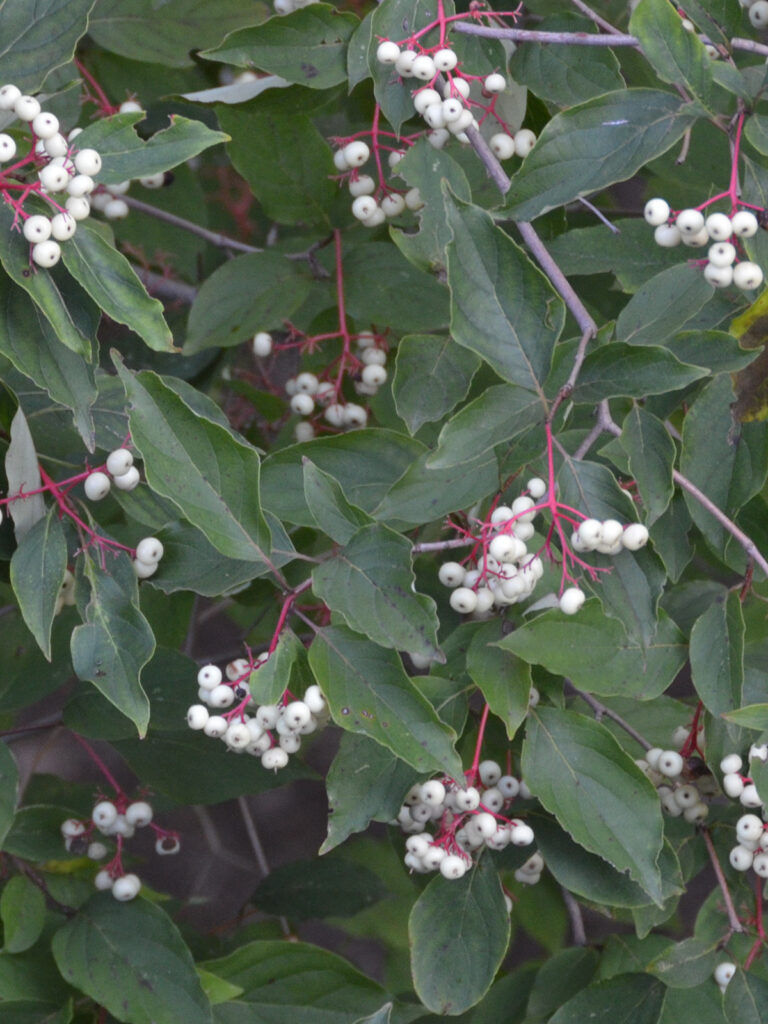
These berries always remind me of little marshmallows. The birds really like them, but even if they eat them all, the red pedicels remain, keeping the shrub colorful and attractive.
Wildlife: Berries for birds, nectar for butterflies
Larval host: Spring azure
** SUPPORTS CONSERVATION BIOLOGICAL CONTROL **
- Learn more:
- Wildflower Center: Gray dogwood
KEYSTONE: Red-twig dogwood (Cornus sericea ‘Baileyii’)
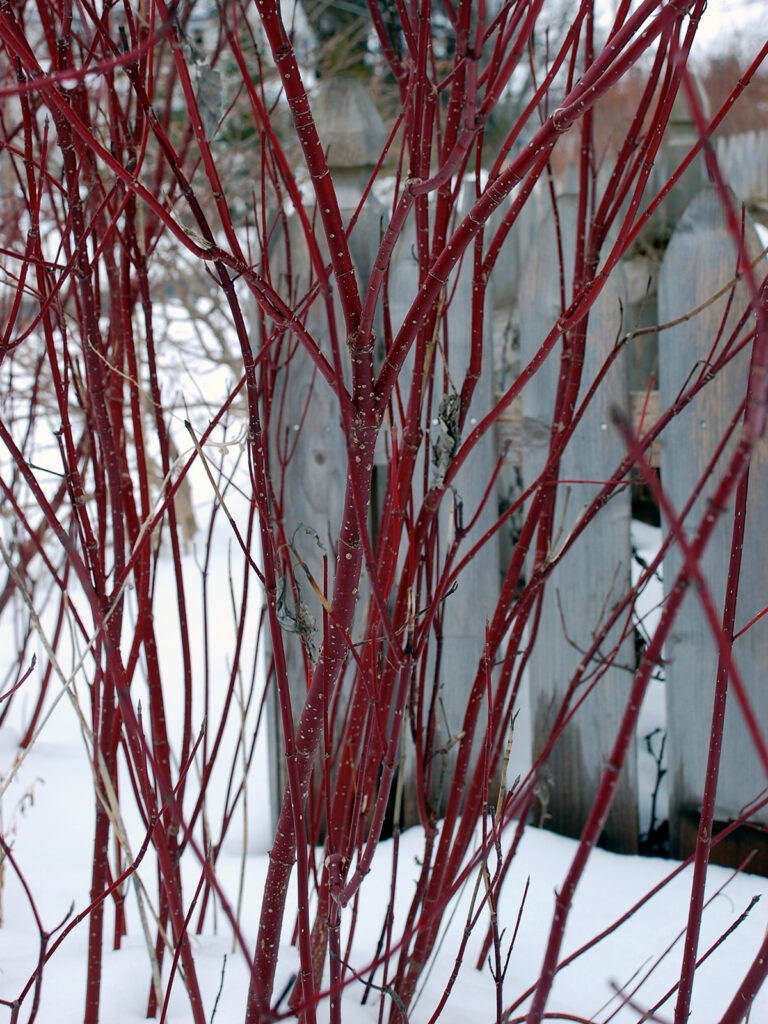
True to its name, the branches really are red. They’re especially attractive framed by snow or even by our gray fence.
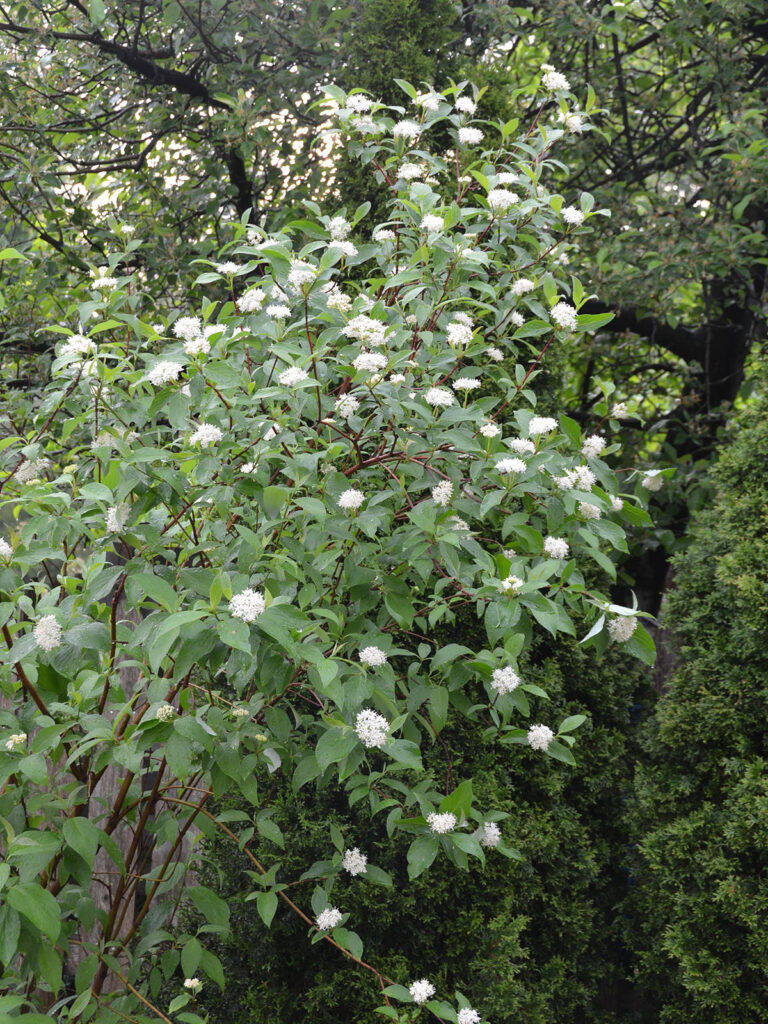
The red-twig dogwood flower is like many of the shrub dogwoods, which means it doesn’t have the prototypical dogwood flower. Still, it’s attractive, and leads to berries, though not as many as my other kinds of dogwood.
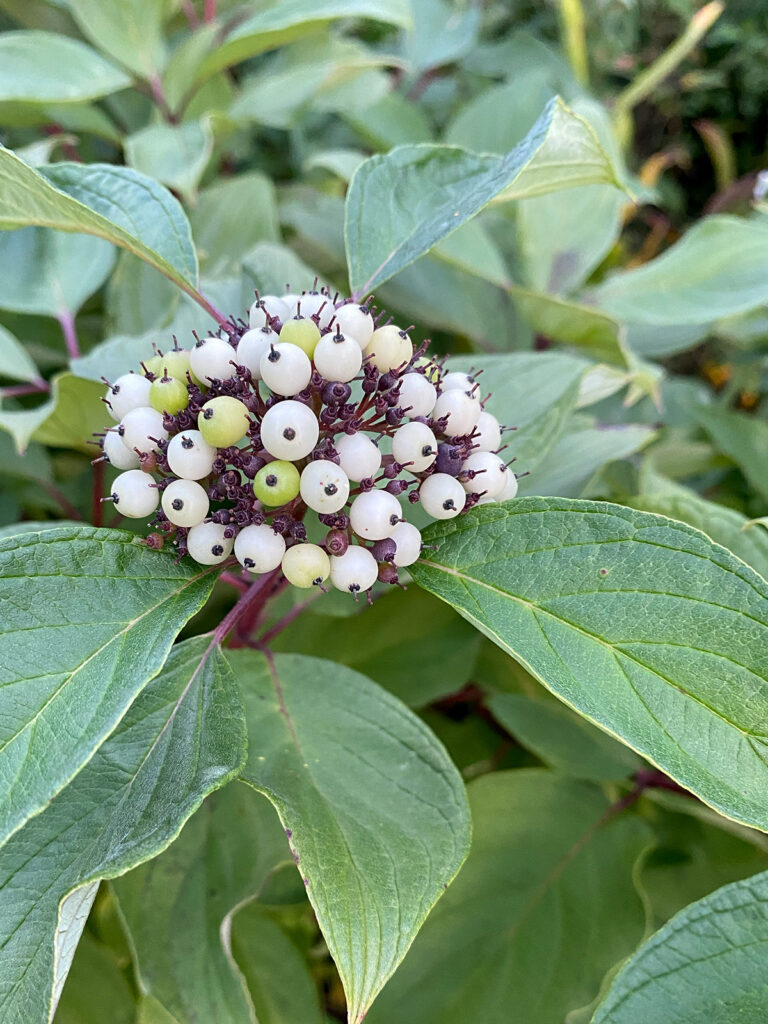
These are some of the berries.
Wildlife: Birds and butterflies
Larval host: Spring azure
- Learn more:
- Wildflower Center: Red-twigged dogwood
- US Forest Service: Plant of the Week
Bush honeysuckle (Diervilla lonicera)
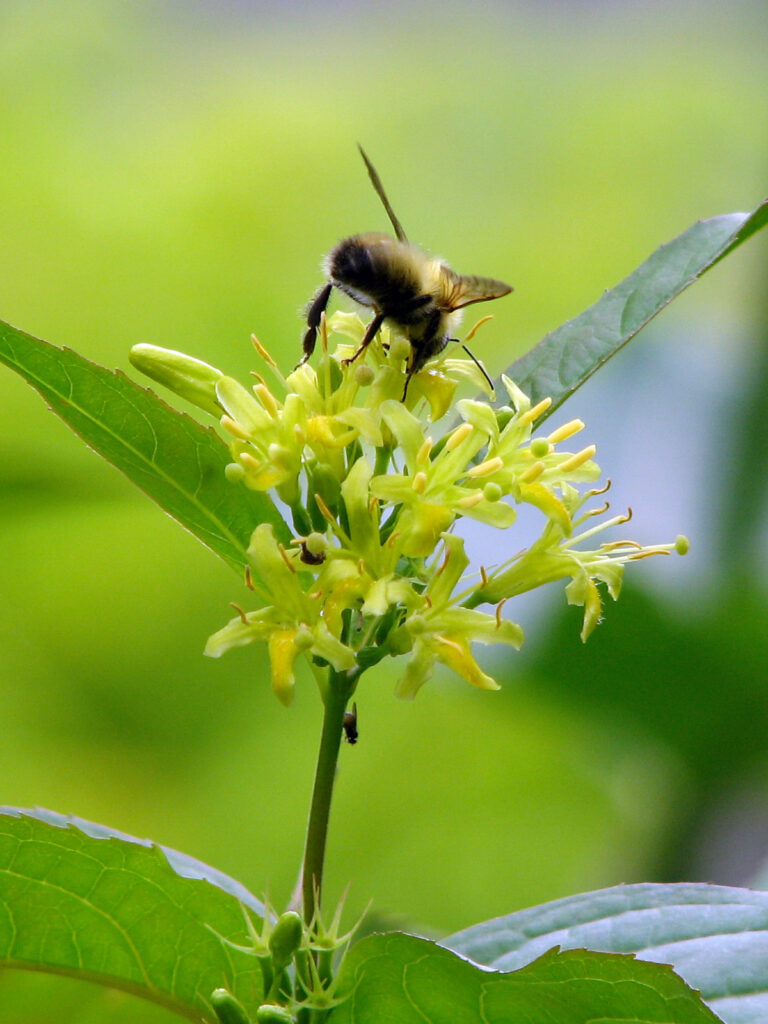
This isn’t a true honeysuckle, which would then be named ‘Lonicera something’ rather than ‘Diervilla lonicera.’ I really like this shrub, and the bees do, too. It’s only about three feet tall, but spreads horizontally with arching stems. I especially like the color of the leaves, which have a rosy blush to them in a sunny location.
The flowers aren’t large, but they’re attractive. It’s a very easy plant to grow, and sometimes branches touching the soil will root, so I get a few free plants. They make a great filler. I have one growing under the Kentucky coffee tree, though the leaves in the shade don’t get the nice rosy blush. It does bloom, though.
** SPECIAL VALUE TO BUMBLE BEES **
- Learn more:
- Wildflower Center: Bush honeysuckle
